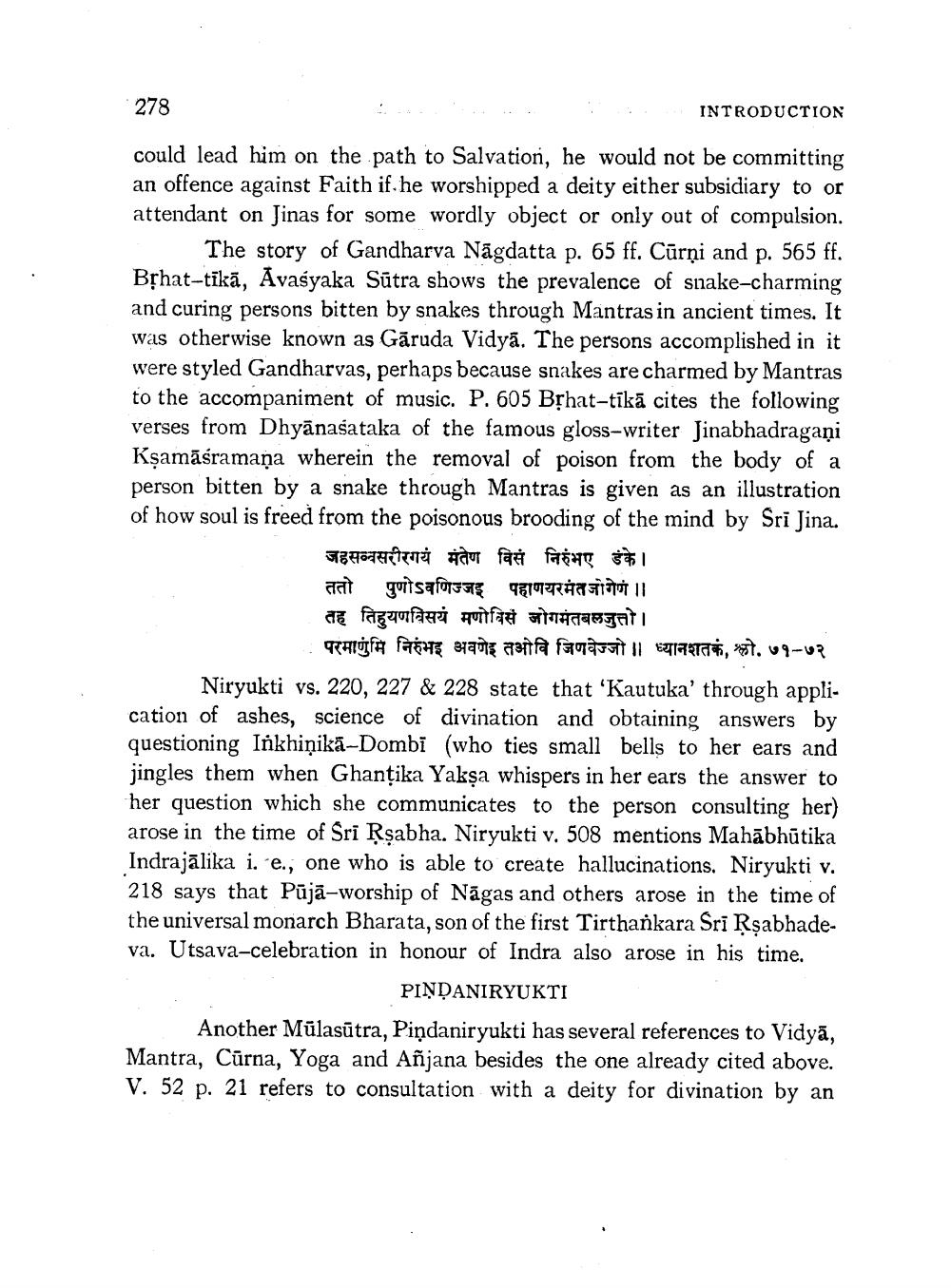________________
278
could lead him on the path to Salvation, he would not be committing an offence against Faith if he worshipped a deity either subsidiary to or attendant on Jinas for some wordly object or only out of compulsion.
INTRODUCTION
The story of Gandharva Nagdatta p. 65 ff. Cūrņi and p. 565 ff. Bṛhat-tikā, Avasyaka Sūtra shows the prevalence of snake-charming and curing persons bitten by snakes through Mantras in ancient times. It was otherwise known as Garuda Vidya. The persons accomplished in it were styled Gandharvas, perhaps because snakes are charmed by Mantras to the accompaniment of music. P. 605 Bṛhat-tīkā cites the following verses from Dhyanasataka of the famous gloss-writer Jinabhadragani Kṣamāśramaṇa wherein the removal of poison from the body of a person bitten by a snake through Mantras is given as an illustration of how soul is freed from the poisonous brooding of the mind by Sri Jina.
जहसव्वसरीरगयं मंतेण विसं निरंभए डंके । ततो पुणोऽवणिज्जइ पहाणयरमंत जोगेणं ॥
तह तिहुयणविसयं मणोवि जोगमंतबलजुत्तो ।
परमाणुमि निरुंभइ अवणेइ तभवि जिणवेज्जो ॥ ध्यानशतकं, श्लो. ७१-७२
Niryukti vs. 220, 227 & 228 state that 'Kautuka' through application of ashes, science of divination and obtaining answers by questioning Inkhiņikā-Dombī (who ties small bells to her ears and jingles them when Ghanțika Yakṣa whispers in her ears the answer to her question which she communicates to the person consulting her) arose in the time of Sri Rṣabha. Niryukti v. 508 mentions Mahābhūtika Indrajalika i. e., one who is able to create hallucinations. Niryukti v. 218 says that Pūjā-worship of Nagas and others arose in the time of the universal monarch Bharata, son of the first Tirthankara Sri Rṣabhadeva. Utsava-celebration in honour of Indra also arose in his time.
PINDANIRYUKTI
Another Mülasūtra, Pindaniryukti has several references to Vidya, Mantra, Curna, Yoga and Añjana besides the one already cited above. V. 52 p. 21 refers to consultation with a deity for divination by an




